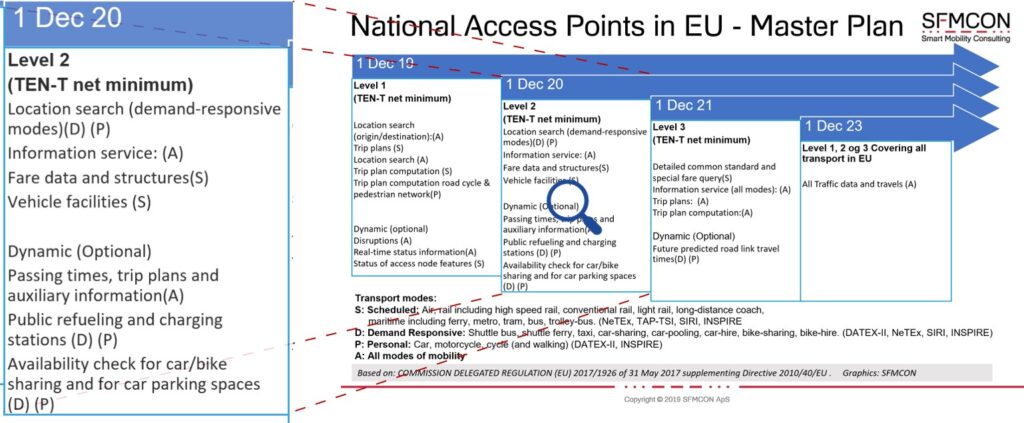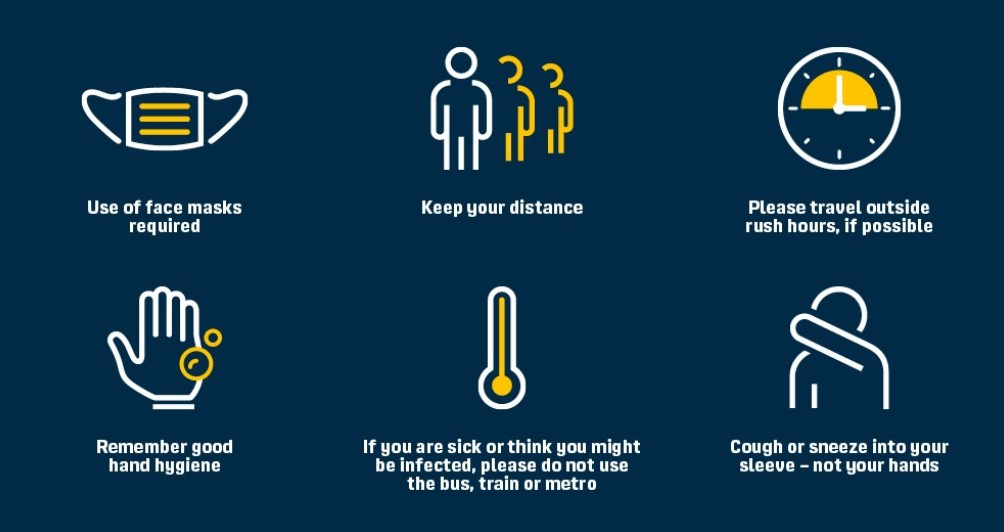Less than two months to deadline for publishing more mobility data through National Access Points
Open mobility data, following service level 2 of the MMTIS regulation, shall be published, and made available through the NAP by all mobility actors in scope no later than December 1, 2020.

Master plan derived from the MMTIS regulation (showing major elements only). Highlighting phase 2. (Source SFMCON ApS)
What can end-users of the open mobility data for all modalities expect of new services and information for travelling
Today people are used to be able to navigate anywhere internationally using GPS in the car including access to dynamic information on the traffic situation ahead.
In the future with MMTIS open mobility data you can get access to digital maps and other up to the minute accurate travel information services for all ground, sea, and air modes of transport. In fact a complete digital twin of the mobility ecosystem.
Multimodal travel information service providers will be able to deliver all practical options for your door to door mobility needs including duration, modal shifts, and total price for each proposed travel chain.
While travelling you can be kept updated with important and reliable navigation and modal shift information and alternative paths in case of disruption.
Benefits to end users in (future) pandemic like conditions
Utilizing open mobility data standards and formats is easy to share the pandemic restrictions from shared mobility services to end users– even as changes in restriction level are changing frequently as the world is struggling to get back to normal.
As soon as the primary data are updated it ripples out through the open data channels and are available to end users as part of their planning process.

Example of information on how to navigate in a public transport ecosystem during a pandemic situation. Source: https://dinoffentligetransport.dk/en/
End users are looking for information on questions like:
- Will I be able to get on the next bus or is it too loaded?
- What should I consider when booking a train ticket?
- What is the physical distancing policy in effect for the service?
- Is use of masks mandated?
- When was the shared car cleaned and sanitized? Etc.
End users should also as part of a journey plan get suggestions to use walking and cycling as an option for some or all the journey. Substituting a bus-ride with a bicycle ride is good for the end user and creates more space in the bus to maintain physical distance for those who are dependent on the bus for their mobility needs, especially essential workers.
From walled gardens of mobility data to open data
The open mobility data in the 28+ NAPS opens a completely new scene for multimodal travel information services. Stimulating startups utilizing MMTIS open mobility data and publish early success stories should be prioritized on a national and EU level.
Looking forward to seeing the walled gardens of mobility data be transformed to a big green field of open mobility data making it easier to make smart and sustainable choices of travel plans. Can’t wait to get hands on a multimodal “GPS” to help me navigating from door to door independent of means of transport modes.
What do you think the effects of open mobility data through National Access Points will be for the conversion from use of private cars to shared mobility options?
Is open mobility travel information services in itself the magic bullet? Or what else do we need to foster the transition to freedom of mobility through the shared mobility ecosystem?
More on the impact of the MMTIS NAP regulation?
For independent advice and consulting on the MMTIS regulation, what it takes to comply or inspiration to how to make use of the open data feel free to contact me anytime on sos@sfmcon.com.
Also check out my other posts on MMTIS in my blog and on my linkedIn profile sorenhsorensen
See the MMTIS regulation text here.
